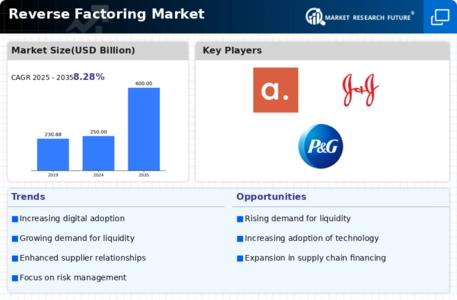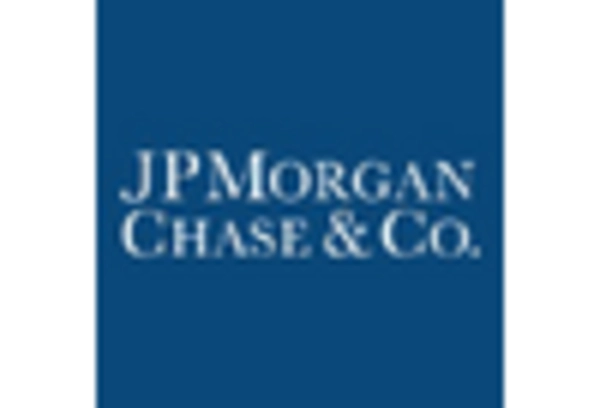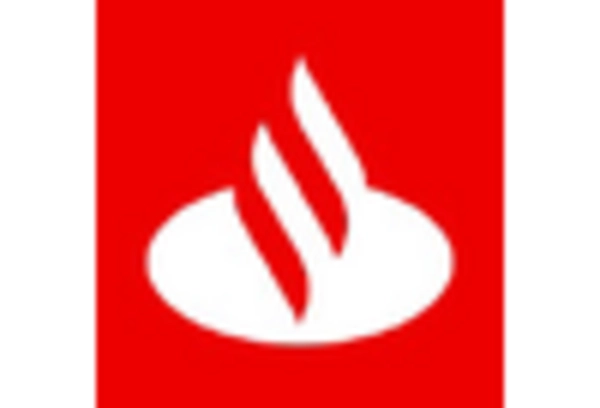Enhanced Cash Flow Management
The Reverse Factoring Market is experiencing a surge in demand due to the increasing need for enhanced cash flow management among businesses. Companies are recognizing the importance of maintaining liquidity while ensuring that suppliers are paid promptly. This financial arrangement allows buyers to extend their payment terms while suppliers receive immediate payment, thus improving their cash flow. According to recent data, businesses utilizing reverse factoring have reported a reduction in working capital requirements by up to 30%. This trend is particularly evident in sectors such as manufacturing and retail, where cash flow is critical for operational efficiency. As organizations continue to seek ways to optimize their financial strategies, the reverse factoring model appears to be a viable solution, driving growth in the Reverse Factoring Market.
Focus on Supply Chain Resilience
The Reverse Factoring Market is increasingly aligned with the focus on supply chain resilience. Businesses are recognizing the importance of maintaining robust supply chains, particularly in times of economic uncertainty. Reverse factoring provides a mechanism for companies to support their suppliers, ensuring that they remain financially stable. This approach not only mitigates risks associated with supply chain disruptions but also fosters long-term partnerships. Data indicates that companies investing in supply chain resilience are likely to see a 20% improvement in operational efficiency. As organizations prioritize stability and reliability in their supply chains, the reverse factoring model is expected to gain traction, further driving growth in the Reverse Factoring Market.
Increased Supplier Participation
The Reverse Factoring Market is witnessing increased participation from suppliers, driven by the benefits of immediate payment and reduced financial strain. Suppliers, particularly small and medium-sized enterprises, are increasingly adopting reverse factoring as a means to secure faster payments. This trend is supported by data indicating that approximately 60% of suppliers prefer this model over traditional payment methods. The appeal lies in the ability to access funds quickly, which can be reinvested into their operations. As more suppliers recognize the advantages of participating in reverse factoring programs, the overall market is likely to expand. This shift not only enhances supplier relationships but also contributes to a more stable supply chain, further propelling the growth of the Reverse Factoring Market.
Regulatory Support for Alternative Financing
The Reverse Factoring Market is benefiting from increasing regulatory support for alternative financing solutions. Governments and financial institutions are recognizing the need for innovative financing options to support businesses, particularly in challenging economic climates. Recent policy changes have encouraged the adoption of reverse factoring as a legitimate financing method, providing businesses with more options to manage their cash flow. This regulatory environment is likely to foster growth in the reverse factoring sector, as companies seek to leverage these supportive measures. Furthermore, as awareness of reverse factoring increases among businesses, the market is expected to expand, driven by favorable regulations and a growing acceptance of alternative financing solutions.
Technological Advancements in Financial Services
Technological advancements are playing a pivotal role in shaping the Reverse Factoring Market. The integration of digital platforms and fintech solutions has streamlined the reverse factoring process, making it more accessible for businesses of all sizes. Innovations such as blockchain technology and artificial intelligence are enhancing transparency and efficiency in transactions. Recent statistics suggest that the adoption of technology in financial services has increased by over 40% in the last two years. This trend is likely to continue, as companies seek to leverage technology to improve their financial operations. As a result, the Reverse Factoring Market is expected to benefit from these advancements, leading to increased adoption rates and a more competitive landscape.

















